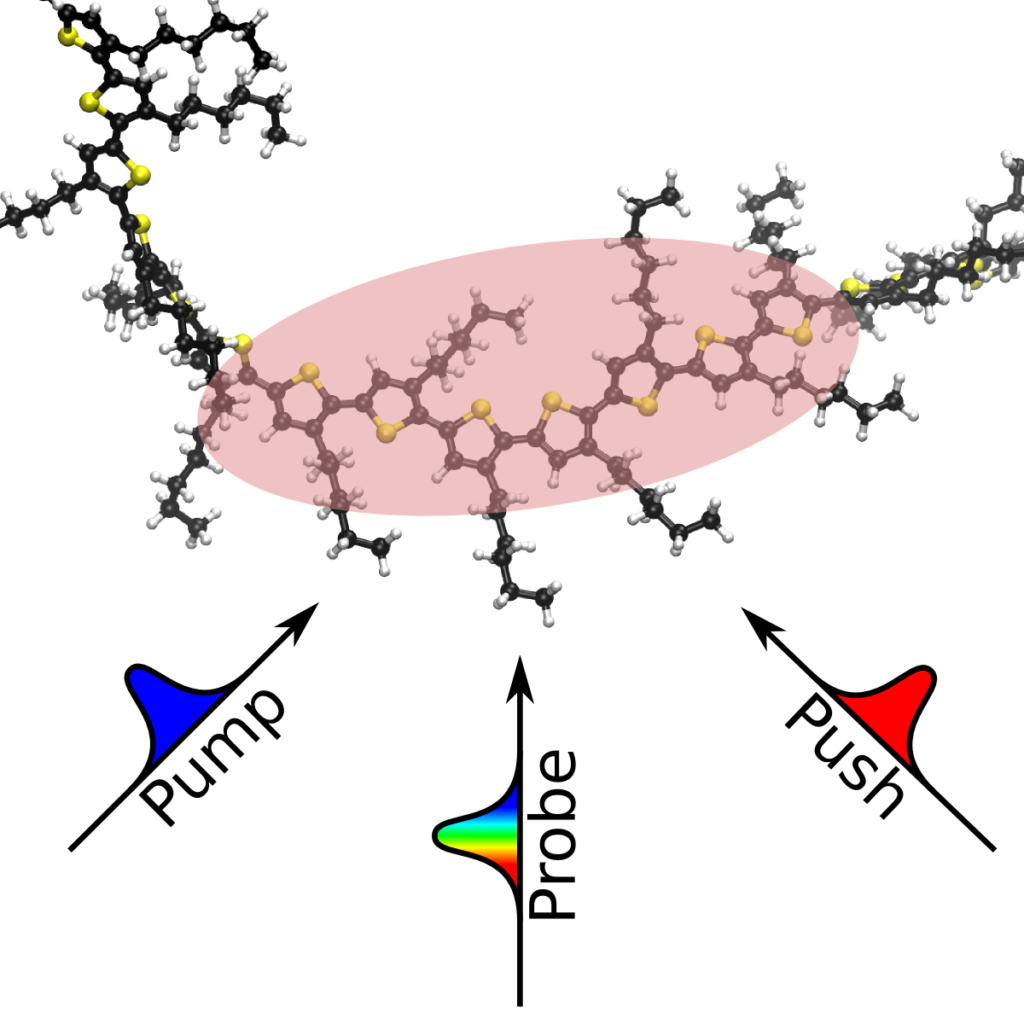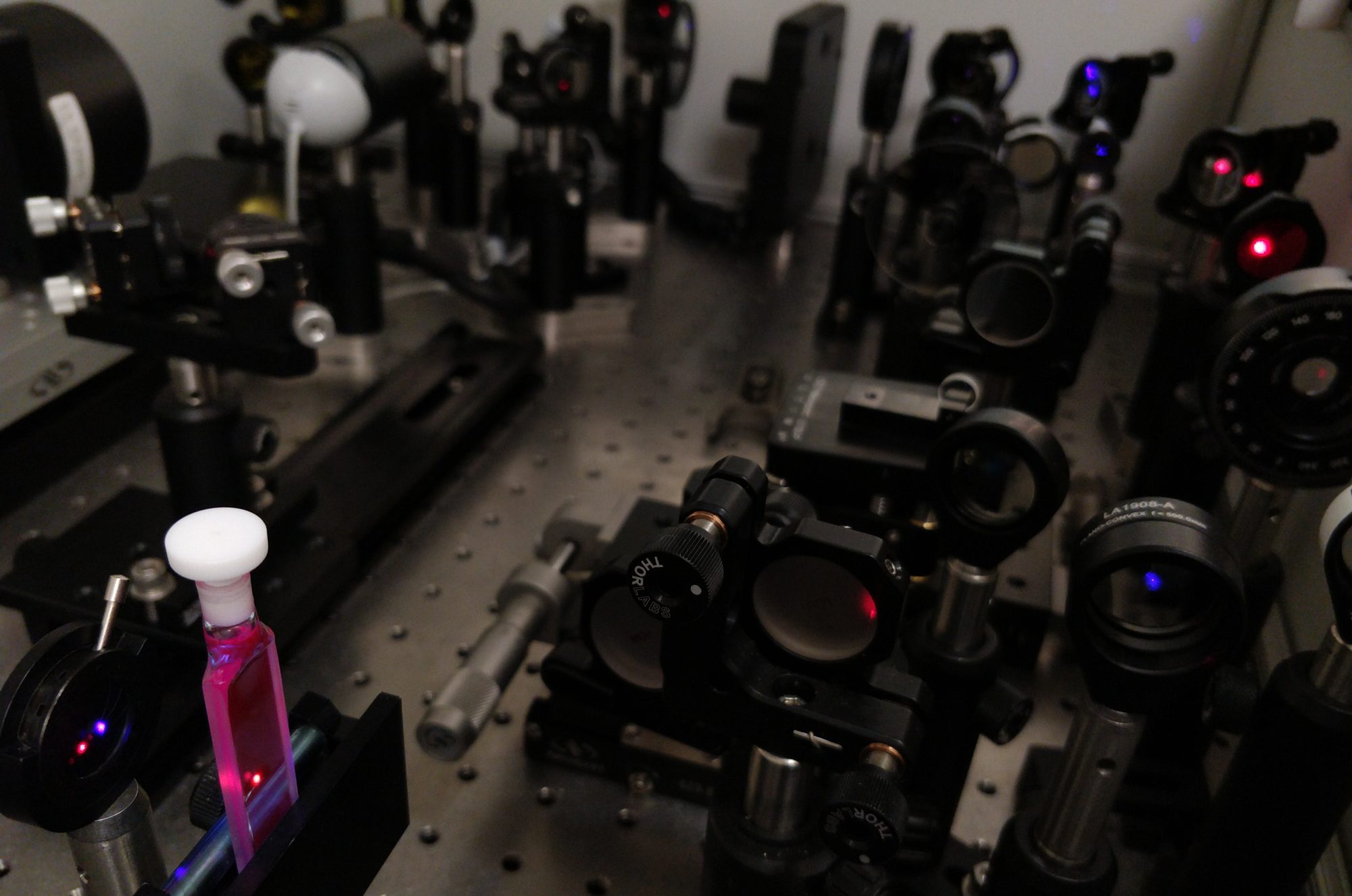This was my first publication during my PhD. It focused on a three-pulse transient absorption technique applied to a common conjugated polymer material. It was published in the Journal of Physical Chemistry Letters, DOI: 10.1021/jz500217f.

The dynamics of high-energy excitons of poly(3-hexylthiophene) (P3HT) are shown to consist of torsional relaxation and exciton dissociation to form free carriers. In this work, we use pump–push–probe femtosecond transient absorption spectroscopy to study the highly excited states of P3HT in solution. P3HT excitons are generated using a pump pulse (400 nm) and allowed to relax to the lowest-lying excited state before re-excitation using a push pulse (900 or 1200 nm), producing high-energy excitons that decay back to the original excited state with both subpicosecond (0.16 ps) and picosecond (2.4 ps) time constants. These dynamics are consistent with P3HT torsional relaxation, with the 0.16 ps time constant assigned to ultrafast inertial torsional relaxation. Additionally, the signal exhibits an incomplete recovery, indicating dissociation of high-energy excitons to form charge carriers due to excitation by the push pulse. Our analysis indicates that charge carriers are formed with a yield of 11%.
